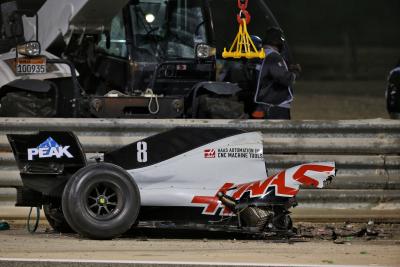Romain Grosjean “the only way to survive” memory from fireball horror
“It was the shortest - and the longest - 30 seconds of my life."
Guenther Steiner has recalled the terror of Romain Grosjean’s notorious fireball crash.
Grosjean’s Haas hit the barriers at the 2020 F1 Bahrain Grand Prix at 137mph with a full load of fuel, before bursting into flames.
After a few seconds of horror, Grosjean hopped out of the wrecked car.
“The biggest reflection is that we got lucky,” then-Haas team boss Steiner told the Sky F1 podcast. “Somebody looked after us.
“It was the shortest - and the longest - 30 seconds of my life.
“You know that if he doesn’t come out now, then he’s not coming out…
“I have done racing cars for a long time and, when you see this ball of fire, you know he is not surviving unless he comes out.
“The only way to survive is to jump out of the car.
“While you try to take control of the situation, he jumps out. And it’s finished, we are good.
“The most important thing is that he is alive. And we will deal with the rest.
“Now, I don’t look back negatively because he got away with it.
“Think about the positives. The safety of these racing cars. “Without the Halo, he would have had no chance to come out.
“The people around him who helped.
“He got lucky but F1 made their own luck by being stringent. “After anything happens they introduce new measures to make it safer.
“After that crash, there were changes made to the car so that this cannot happen.
“There was nothing wrong with the car. We’d never experienced anything like this. We could not simulate it.
“I take the positives away. I give a lot of credit to Jean Todt, the FIA president, who pushed the Halo system through because a lot of people were against it.
“People make decisions which make these things happen.”
The Halo, in particular, is now widely considered a revolutionary technological advancement.
The curved bar which sits around a driver’s head while he sits in the cockpit was initially criticised for its aesthetic, including by some people within F1.
But years later it is credited with keeping several drivers safe in their scariest moments.











